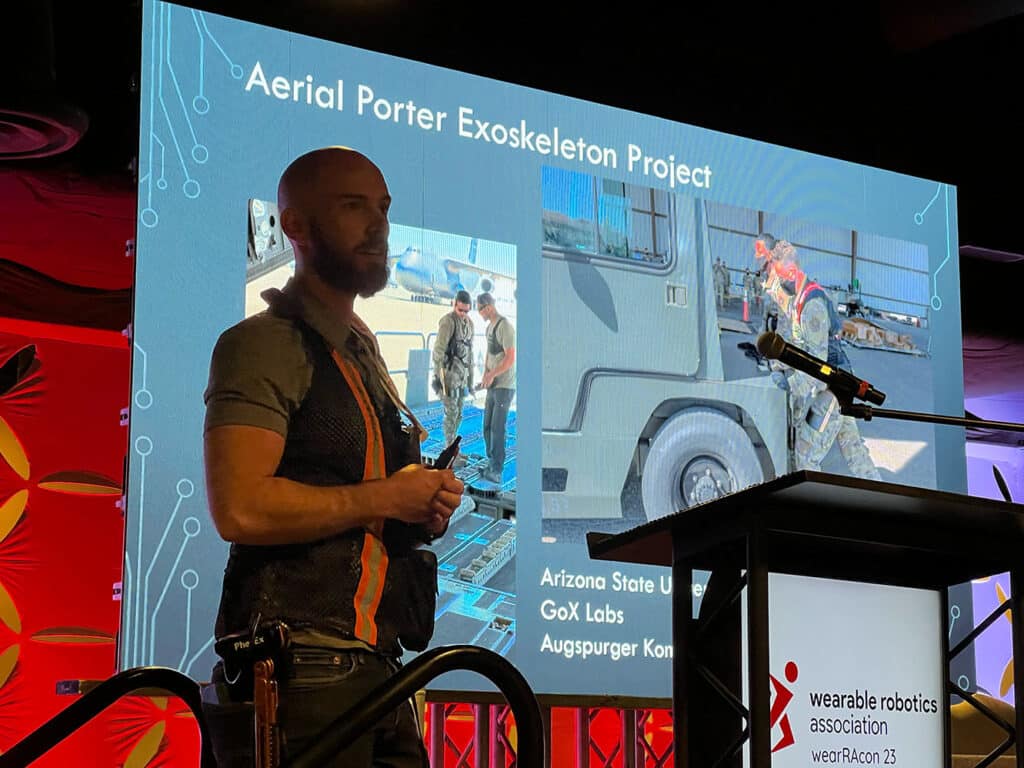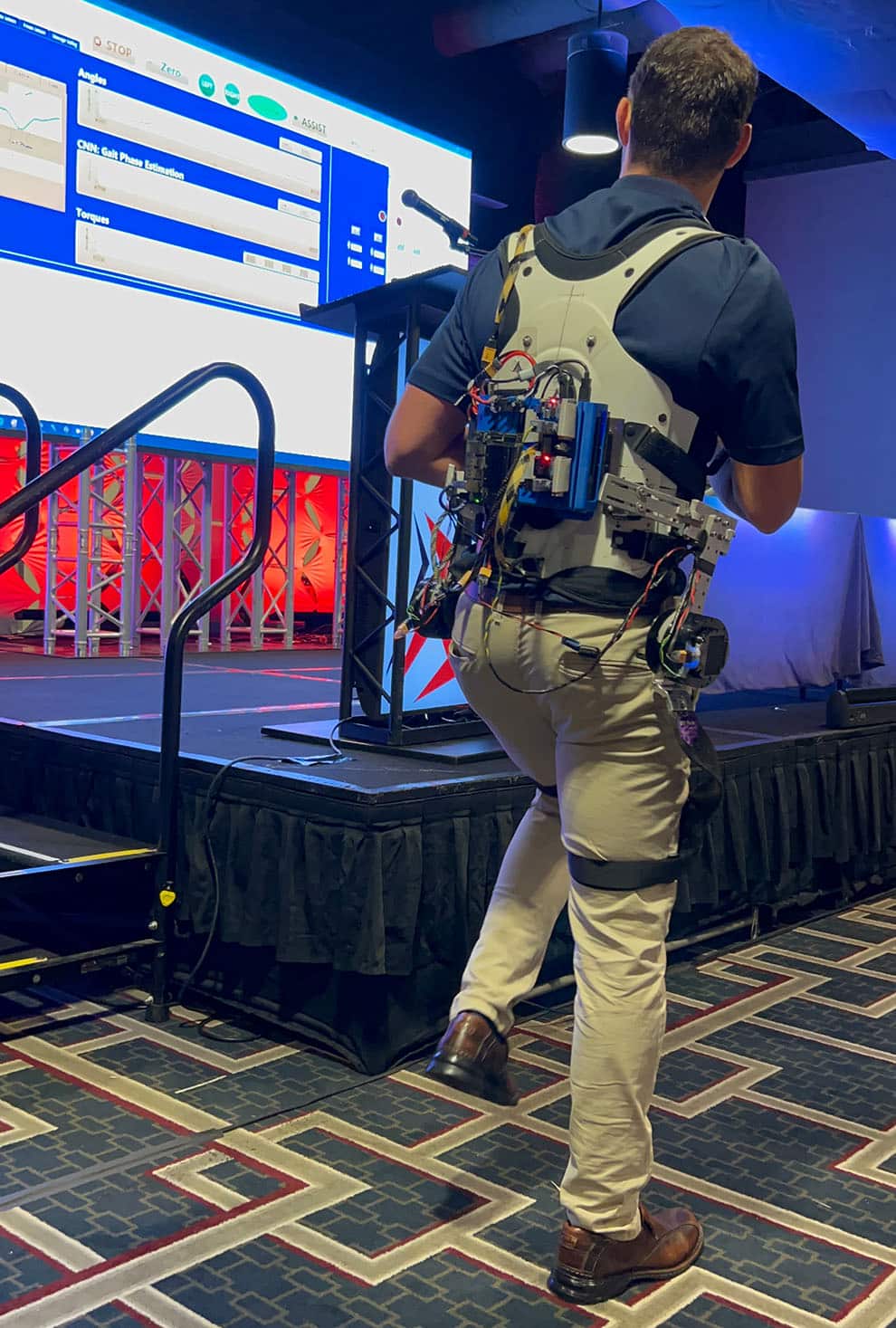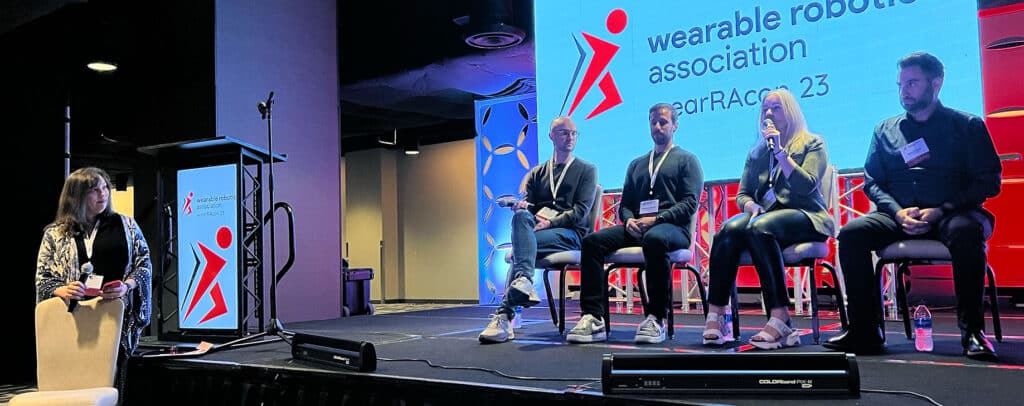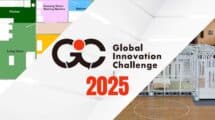The 8th annual Wearable Robotics Association Conference (WearRAcon) was held at the end of March 2023. Unlike prior iterations of the meeting, which were held in Arizona, this year, exoskeleton companies, students, and experts from around the world met at the giant Hyatt Regency at 601 Loyola Avenue, less than a mile away from the jazz capitol of the French Quarter in New Orleans, Louisiana. As an experiment, WearRAcon 23 was held back-to-back with the Applied Ergonomics Conference, which took place at the same venue just prior.

True to form from past events from this series, WearRAcon began with a light breakfast that included scones, yogurt, and a near-limitless supply of coffee. Conference attendees got to power up and network in the main exhibit hall while surrounded by display and presentation tables. While there were fewer posters and exhibitors compared to prior years, it was still a remarkable event. Where else can you sip on coffee while trying out an exoskeleton? In the middle of all this, one of the exhibitors, ErgoSanté, was simultaneously 3D printing the first “made in the US” French-designed passive exoskeleton. (for more on ErgoSanté manufacturing in the US, see: ErgoSanté is Full of Surprises at WearRAcon 23).
The conference was officially kicked off by the Executive Director of WearRA, Dr. Joseph K. Hitt, who emphasized that the future of occupational exoskeletons will be to combat worker fatigue. Dr. Hitt also expressed his views that the future is never a straight line and that both WearRA and wearable robotics companies need to stay agile and be ready to pivot.
The opening remarks were followed by two Spotlight Demos:

First up to the stage was Dr. W. Brandon Martin, representing Phoenix Robotics Group, LLC, and Augspurger Komm Engineering, which consults for the US Space Force. Martin demoed the quasi-passive exoskeleton Phoenix (not to be confused with the medical one made by suitX/Ottobock). The powered cousin of this wearable was recently tested with Aerial Porters by the US Air Force in Oct 2022. The Phoenix is a spring-actuated version of the same device but with a control module that can selectively engage or disengage the elastic element automatically (as opposed to the user hitting a switch). This makes Phoenix significantly more affordable and accessible than the powered version that was previously tested.
The second Spotlight Demo was headed by Benjamin Shafer and Dean Molinaro from the Georgia Institute of Technology EPIC Lab. Don’t be alarmed by all the cables and wires sticking out of their powered hip exoskeleton. This was a live presentation of an experimental AI-powered controller that could switch between modes automatically. If you have ever seen the 2016 or 2020 CYBATHLON Exoskeleton Race, you will know how much time is wasted on users switching between the correct control mode for their wearable robot (flat ground, change in speed, stairs, change in slope, etc.). Wouldn’t it be wonderful for powered exoskeletons to have enough insight so they can make the mode switching autonomously!?

The two Spotlight Demos were followed up with a delicious lunch and more opportunities for attendees to network and discuss wearable robotics. The conference participants then split up by Industrial and Medical breakout session tracks. There were eight breakout session blocks in total, many of which had multiple presentations. Covering all of them is beyond the scope of this article, but here are some highlights:
Jason Gillette, Iowa State University, and Terry Butler, Lean Steps Consulting Inc., returned to WearRAcon to continue on their story of seven years of occupational exoskeleton testing and evaluation. The duo brought a test fixture to evaluate the usability of shoulder-support exos for drilling while standing or sitting and for stacking loads. Three volunteers were selected from the public to participate. One of the innovations was using video imaging with AI-generated calculation to determine if a task is above or below the Threshold Limit Value (TLV). The algorithm was powered by the seven years of prior research by the presenters. It appeared that the assessment tool is already in use by Levitate Technologies, but the presenters did share their desire to make it free to use in the near future.
The Automotive Exoskeleton Group AExG held a forum on exoskeleton usage in manufacturing. The forum was led by Kaleigh Fleming from Mazda Toyota Manufacturing (MTM for short, a new ~6000 employees contract manufacturer) and Marvyn Rieger from Ottobock Bionic Exoskeletons. The two presenters went through the state and revitalization of the exoskeleton use program at MTM. Some takeaways were that, in the opinion of the presenters, exo implementation should be volunteer-based, with a minimum of 3-6 week initial trial, with dedicated on-site resources, and an in-writing commitment of the interested employees to wear the devices. Another takeaway was that device inspection and maintenance should happen at least once quarterly in order to avoid new injuries due to the use of a damaged or degraded exo.

The last breakout session in the industrial track was an expert panel on the past & future of exoskeleton technology. The panel was led by Rita Vazquez-Torres, CEO of New Stone Soup VT LLC, with panelists (left to right): Sam Reimer, Ottobock Bionic Exoskeletons; Matt Marino, Prime Performance; Marisol Barrero, Amazon Web Services; and Ryan Porto, General Motors; (combined together there were more than 70 years of experience with occupational and military exoskeletons between the five of them).
What was discussed by the panelists? There is no cookie-cutter rulebook on exo implementation; each one will be unique to the specific company culture where they are being applied, was one strong opinion. Exoskeletons are continuously evolving, becoming smaller, more intuitive, and more transparent. Unfortunately, implementation and abandonment are emerging as major challenges. What could be done for more workers to have access to and benefit from them? One reoccurring opinion was that we need more education on fatigue, testimonials, and videos of wearables in use. The workers that are expected to wear them need to understand the basic science of what exoskeletons can and can’t do for them in advance. Unfortunately, this still remains a hidden technology that few know about, and many mischaracterize it for their benefit.
Consumer exoskeletons are also lagging behind medical and occupational ones, making it that much harder to make them relatable. Arguably, wearable sensors for work became popular only after they were already in use by athletes and fitness enthusiasts as consumer-grade health trackers.
Finally, one of the medical panels was based on a new exoskeleton information portal. It should be emphasized that since its beginning in 2015, the Exoskeleton Report to this day has never shared any visitor data other than the total number of page views with an outside organization.
The second and final day of the WearRAcon 23 will be recapped in a future article; stay tuned!
Correction, April 4th, 2023: A previous version of the article stated in the second to last paragraph that a new exoskeleton information portal has plans to sell user data. A representative of the company has reached out on LinkedIn to state that this is inaccurate and that “no User data will be Sold.” We apologize for the error.












What a fascinating event! Thank you for such a detailed overview.